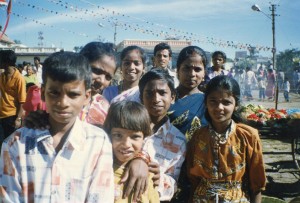India assumes many forms. I’ve heard lots of people’s interpretations of this land that are contrary to each other. It takes a lot of breadth and nuance to do her culture justice.
- German scholars in the late nineteenth and early twentieth century saw her as a model of spirituality. So did Indian Vedantists like Swami Vivekananda.
- Others have seen her as sensual–the land of the Kama Sutra. Octavio Paz latched onto this idea during his six-year tenure as the Mexican ambassador. He described a genre of erotic Sanskrit poetry that I wasn’t aware of. Its super-refined details made me horny.
- Today, many Indians love business, cricket and Bollywood. The country’s average age is 25, and young people are eager to ditch the past’s baggage. They want their country to be a tiger rather than an elephant.
- The Nobel Prize-winning economist Amartya Sen, in The Argumentative Indian, wrote that the current love of business isn’t new. Indians have always loved commerce. Many rich ancient dynasties reveled in finery. The Tamil epic the Cilappatikaram described a society of merchants with tall houses, frolicking on the beach with flowers in their hair. California dreaming–a heck of a lot hotter though.
So what’s the real India?
All of the above. Whatever you want to focus on, you’ll find in abundance. And you’ll find its opposite. And you’ll encounter ideas that integrate both. It takes a lot of imagination to explore this ancient land moving into the cutting edge of the digital world.
Mark Twain was a prolific world traveler. At the end of his life, he wrote that India was the one place he longed to see again. This restless man found it full of life. And he only focused on its material aspects. He could have found much wealth if he had studied its ancient culture.
Indian ideas of abundance have taken on many forms over the centuries, from subtle spiritual energies emanating from the universe’s origin, to the emotional intensity of bhakti (devotional) yoga, to the bustle of today’s streets. Indian sensibilities fit today’s rapidly changing world well.
Ideas of abundance also blend well with America’s original spirit. The wide open horizons of Ralph Waldo Emerson, Walt Whitman and William Carlos Williams would have found India as enervating as Twain did. So the Indian category in this blog will fuse the most expansive imaginations of both lands. Let’s get ready to soar high and far.




Comments on this entry are closed.